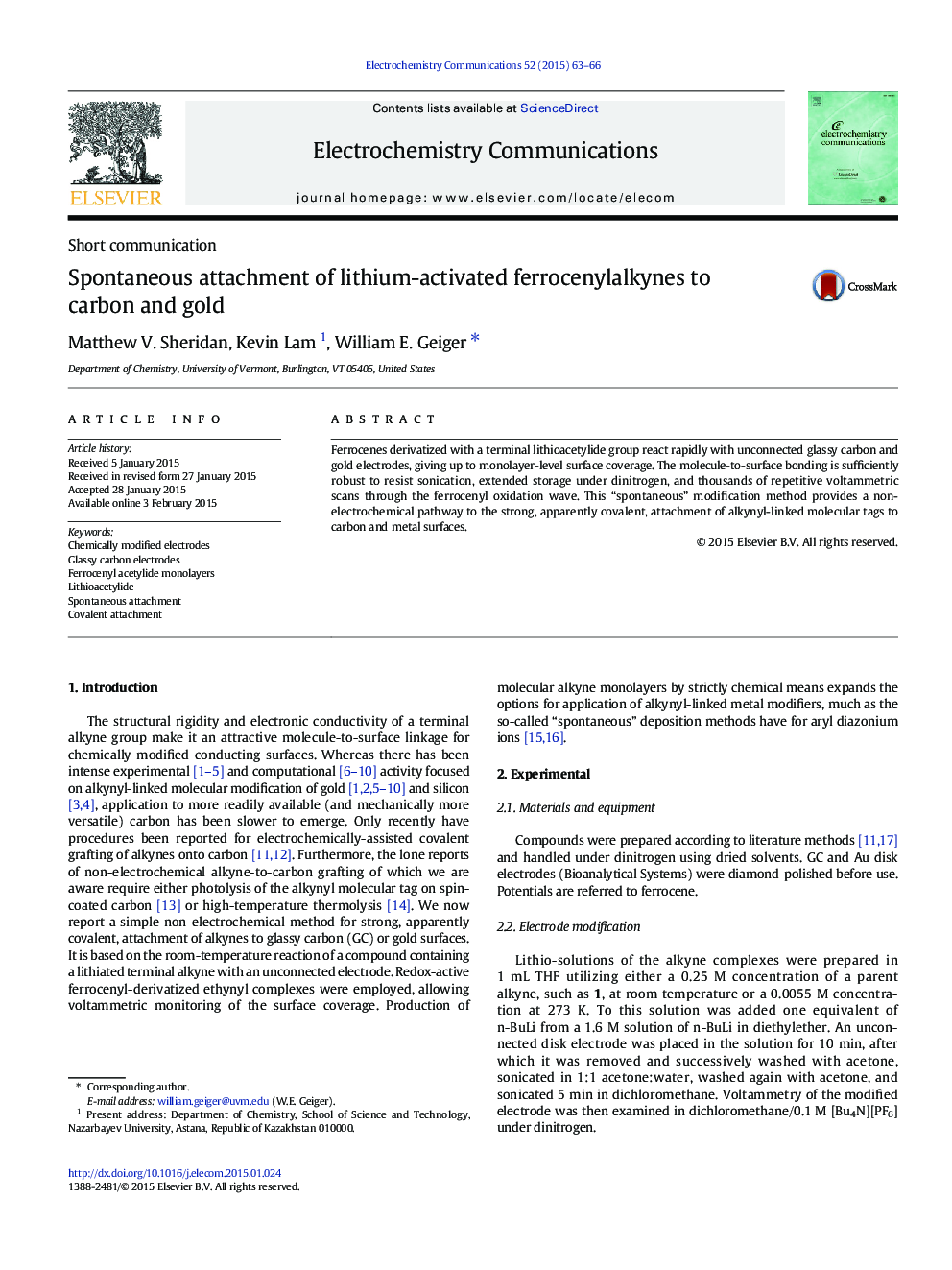| Article ID | Journal | Published Year | Pages | File Type |
|---|---|---|---|---|
| 178930 | Electrochemistry Communications | 2015 | 4 Pages |
•Ferrocenyl lithioacetylides in THF attach covalently to unconnected electrodes.•Ethynyl-linked ferrocene and substituted ferrocenes attached to carbon, gold.•Close to monolayer coverage obtained•Hundreds or thousands of CV scans possible for modified electrodes•‘Spontaneous’ attachment method avoids the need for electrochemical grafting.
Ferrocenes derivatized with a terminal lithioacetylide group react rapidly with unconnected glassy carbon and gold electrodes, giving up to monolayer-level surface coverage. The molecule-to-surface bonding is sufficiently robust to resist sonication, extended storage under dinitrogen, and thousands of repetitive voltammetric scans through the ferrocenyl oxidation wave. This “spontaneous” modification method provides a non-electrochemical pathway to the strong, apparently covalent, attachment of alkynyl-linked molecular tags to carbon and metal surfaces.
Graphical abstractFigure optionsDownload full-size imageDownload as PowerPoint slide
